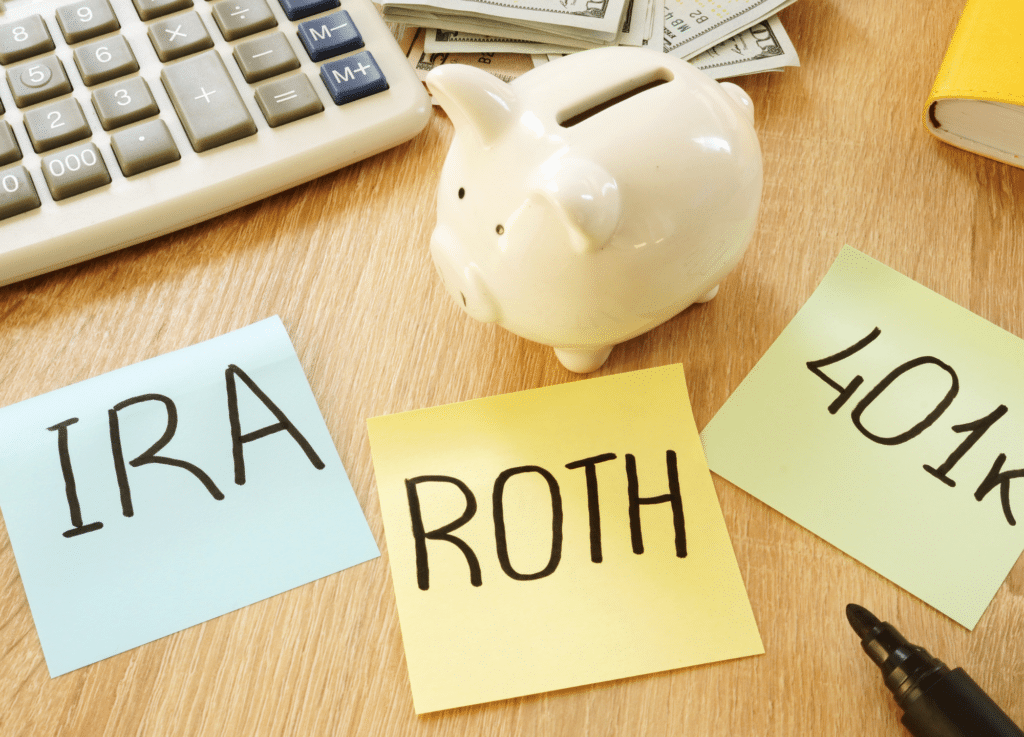For many of us, the idea of retirement conjures visions of leisurely activities and a well-deserved rest from the years of hard work. Yet, the financial side of retirement is a vast and complex landscape, dotted with various instruments designed to help us build a nest egg. Among these, tax-deferred retirement plans stand out for their potential to shield our earnings from the IRS and supercharge our savings for the golden years. If you’re a young professional charting your fiscal path, a financial planner guiding others through the labyrinth of tax rules, or a small business owner trying to do right by your employees and your bottom line, understanding tax-deferred retirement plans is crucial. Today, we’ll take a comprehensive look at what these plans are, how they work, and why they are an indispensable tool in your financial arsenal.

What Are Tax-Deferred Retirement Plans?
Tax deferred retirement plans are investment vehicles that allow individuals to postpone paying taxes on their contributions, gains, and interest until the time of withdrawal, usually in retirement. These plans offer a systematic and tax-efficient way to save for the future, often complementing or even surpassing Social Security benefits.
The significance of such plans lies in their capacity to harness the power of compound interest. Simply put, the longer your money sits in a tax-deferred account, the more it can grow as you accrue interest on both your initial contributions and the interest that accumulates over time. In a world where every dollar counts, compound interest fuels your financial clockwork, propelling you towards your retirement goal at a potentially accelerated pace.
Key vehicles within the domain of tax-deferred retirement plans include the Individual Retirement Account (IRA) and 401(k) plans. Each offers unique advantages tailored to different financial situations and goals. An IRA, often seen as the foundation of retirement planning, allows individuals to make annual contributions, potentially deductible from taxable income, thereby lowering their tax liability today while preparing for tomorrow. On the other hand, 401(k) plans, typically employer-sponsored, enable employees to save a portion of their paycheck before taxes into a retirement account, with the added benefit of possible employer matching contributions. Both of these options exemplify the strategic use of tax-deferred retirement plans to not only save for the future but to optimize one’s current tax situation, making retirement savings both a prudent and financially astute decision.
Types of Tax-Deferred Retirement Plans
Navigating the sea of tax-deferred plans can be daunting, but understanding the key players is the first step in choosing the right path for your financial future. Here are several types of popular tax-deferred retirement plans:
1. Traditional IRA
An Individual Retirement Account (IRA) allows individuals to save for retirement with tax-free growth or on a tax-deferred basis. Contributions to a traditional IRA are often tax-deductible (with some limitations), and your investment grows tax-deferred until withdrawal. Both the deduction and the tax-deferred growth can significantly reduce your current tax bill and turbocharge your savings.
- 401(k)
A 401(k) plan is an employer-sponsored retirement savings plan, named after the section of the Internal Revenue Code that established it. It allows employees to save and invest a piece of their paycheck before taxes are taken out. Employers may also match a portion of the employee’s contributions, which is essentially free money that can significantly bolster your nest egg.
- 403(b)
Similar to a 401(k), a 403(b) is a retirement plan for certain employees of public schools, tax-exempt organizations, and some ministers. It also allows for tax-deferred growth and may come with employer contributions.
4. SEP IRA
A Simplified Employee Pension (SEP) IRA is a retirement plan that can be set up by employers, including self-employed individuals. It’s designed to provide a simplified way for business owners to contribute to their employees’ or their own retirement savings.
5. SIMPLE IRA
The Savings Incentive Match Plan for Employees (SIMPLE) IRA is a retirement plan that may be established by employers, including self-employed individuals. It gives small employers a way to contribute toward their employees’ retirement, and employees may also contribute to their own retirement savings through payroll deduction.
Each of these plans offers unique benefits and caters to different employment structures and retirement savings needs. It’s important to explore which one aligns best with your personal situation and long-term objectives.
Benefits of Tax-Deferred Retirement Plans
Tax Advantages
The most immediate benefit of participating in a tax-deferred retirement plan is the tax savings you enjoy today. Contributions to such plans are made with pre-tax dollars, effectively lowering your taxable income. This can result in a reduced current tax liability, giving you more in-pocket funds to save or invest.
Additionally, the growth of your investment in a traditional IRA or another form of tax-deferred retirement savings is not subject to income tax until you begin to withdraw funds. This means that you don’t have to pay taxes on investment gains year after year, allowing your savings to grow more significantly over time. However, when you eventually withdraw money in retirement, it will be taxed at your current income tax rate. It’s also essential to be aware that different types of retirement accounts might have varied income limits and rules regarding how much you can contribute annually. By choosing the right financial institution and retirement plan, you can maximize your savings and minimize the impact of taxes, strategically planning for a financially secure retirement.
Compound Interest Benefits
The magic of compound interest cannot be overstated. In a tax-deferred account, your contributions grow tax-free until you withdraw them, enabling your funds to grow faster than they would in a taxable account. Over many years, the difference in the final retirement portfolio can be quite substantial.
Retirement Savings Growth
Tax-deferred plans often offer a range of investment options, allowing for diversification and potentially higher returns. Especially when paired with a long-term investment strategy, the growth potential of these accounts can be a key factor in ensuring a comfortable retirement.
Considerations for Young Professionals
The adage “time in the market is more important than timing the market” rings especially true for early-career professionals. Starting to save in a tax-deferred plan as soon as possible is critical for maximizing the benefits.
Starting Early for Maximum Benefits
The power of compound interest is most pronounced when you have the most time for your investments to grow. Even small savings early on can lead to significant wealth accumulation due to the effect of compounding.
Understanding Contribution Limits and Employer Matching
Contributions to retirement plans are often subject to annual limits set by the IRS. It’s essential to be aware of these limits so you can contribute the maximum allowed. Additionally, if your employer offers a match, strive to contribute enough to take full advantage of this benefit, as it’s essentially a guaranteed return on your investment.
Young professionals need to be cognizant of these factors as they begin to build their financial future. Engaging with these opportunities early can set a solid foundation for long-term financial security.
Relevance for Financial Planners
For financial planners, facilitating the best retirement outcomes for their clients involves understanding the intricacies of tax-deferred retirement plans. It’s about building a customized strategy that maximizes savings while minimizing tax liabilities, taking into account each client’s unique financial situation and goals.
Strategies for Clients’ Retirement Planning
A big part of retirement planning revolves around strategy. Financial planners look at when to start withdrawals to minimize tax impact and how to distribute assets effectively. This includes considering when to start Social Security benefits and how they’ll interact with other retirement plans.
Tax Implications and Optimization
Taxes can take a significant chunk out of a client’s retirement savings if not managed carefully. Financial planners guide their clients through contribution rules, distribution regulations, and other tax-related nuances to ensure that retirement funds are used effectively.
Understanding not only how these plans work, but how to strategically use them, is an invaluable skill for any financial planner.
Impact on Small Business Owners
For small business owners, offering tax-deferred retirement plans can be a powerful tool for attracting and retaining top talent, while also providing potential tax advantages for the business itself.
Options for Offering Tax-Deferred Plans to Employees
Small business owners have several options when it comes to providing retirement benefits to employees, from traditional 401(k)s to simplified plans like a SIMPLE IRA. Working with a financial professional can help business owners determine the best fit for their company and its employees.
Business Tax Benefits
In addition to the employee benefits, small business owners can often take advantage of tax deductions for contributions to employee retirement plans. These contributions can also potentially help reduce the business’s taxable income, providing tax savings that can be reinvested into the company or used for other purposes.
Small business owners play a critical role in shaping the retirement landscape for their employees, and tax-deferred plans are a valuable element in that equation.
Retirement planning can be complex, but tax-deferred retirement plans offer clear benefits that are too powerful to ignore. Whether you’re just starting your career, advising others on their financial prospects, or running a business, understanding these plans is not just advantageous—it’s foundational to securing your financial future. By harnessing the strengths of tax-deferred retirement plans, you set in motion a path to ensure that your retirement is a time of reward and security. The message is clear: when it comes to investing in your future, the time is now, and the tool is tax-deferred planning.

Frequently Asked Questions (FAQs)
What is an employer-sponsored retirement plan?
An employer-sponsored retirement plan is a retirement savings plan offered by an employer that allows employees to save and invest a portion of their paycheck before taxes are taken out. Plans like 401(k) or 403(b) are common examples, and they often include tax advantages such as tax deferral on contributed funds and investment gains.
Can I contribute to a Roth IRA with after-tax dollars?
Yes, Roth IRAs are funded with after-tax dollars. This means that contributions are made with money that has already been taxed. The advantage of a Roth IRA is that, under current law, qualified withdrawals in retirement are tax-free, including both the original investment and the investment gains.
How does the Internal Revenue Service (IRS) define a defined contribution plan?
The Internal Revenue Service (IRS) defines a defined contribution plan as a retirement plan that is based on contributions made by the employee, the employer, or both. The final benefits received by the employee upon retirement depend on the plan’s investment performance. 401(k) plans, 403(b) plans, and profit-sharing plans are types of defined contribution plans.
What are the benefits of tax deferral in tax-deferred accounts?
Tax deferral in tax-deferred accounts means that taxes on contributions and investment gains are postponed until the funds are withdrawn, usually at retirement. This can result in a lower tax bill during retirement, particularly if individuals are in a lower tax bracket after they stop working, since retirement income is often lower than working income.
How do tax-deferred retirement accounts work to reduce my tax bill?
Tax-deferred retirement accounts work to reduce your tax bill by delaying the taxes on contributions and any investment gains until withdrawal. This deferral can potentially place you in a lower tax bracket at retirement, reducing the taxes owed on retirement income compared to if the money were taxed in the years it was earned.
Is it better to contribute to an employer-sponsored plan if I expect to be in a lower tax bracket upon retirement?
Contributing to an employer-sponsored plan can be advantageous if you expect to be in a lower tax bracket upon retirement. By contributing with pre-tax dollars through a plan like a 401(k), you benefit from tax deferral on both your contributions and investment gains, which can significantly reduce your tax bill when you begin withdrawals at a presumably lower tax rate.